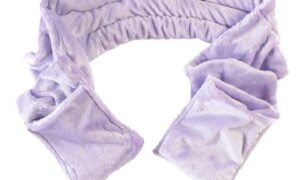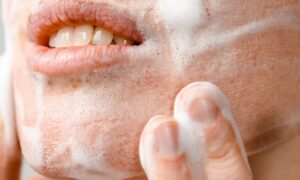Choosing the right material is the most important aspect of development for a custom plastic injection molding machine company because it affects its production and final product. There are so many different plastic materials to choose from for consumers, how do you make the right choice? The first thing to consider is the function of the part and the conditions in which the part will be placed.
Some of the factors that come into consideration are the substance’s tensile strength, heat resistance, durability, cost of production, and the variety of colors available for the material. We have created a list of characteristics for the 10 most commonly-used plastic molding materials and their possible uses. Some of these plastics have many different variants in which case we have listed general properties of the material.
1) Acrylic
The chemical name for acrylic is PMMA and it is most often used to create lighting equipment, transparent windows, and walls because PMMA closely resembles glass. PMMA is tasteless, odorless because it does not contain Bisphenol A (BPA) and it is scratch-proof and weather-resistant. Thick sheets of PMMA are used to create commercial aquariums because it has a better impact resistance in comparison to glass.
A disadvantage of acrylic is that highly toxic fumes are released at the time of manufacturing PMMA. Another disadvantage is that acrylic is not highly scratch-resistant and plastic acrylic sheets can melt at temperatures of 160°C (320°F; 433 K).
2) Acrylonitrile Butadiene Styrene (ABS)
ABS is a chemically and thermally stable product that is a durable plastic that is resistant to repeated impact and still has a nice glossy finish. ABS plastics can be easily molded into different shapes and designs and sanded to present a glossy finish and it is available in many different colors.
The disadvantage of ABS is that it has a low melting-point which means that it is inappropriate for use in high temperatures or prolonged exposure to UV rays. ABS will easily corrode when exposed to corrosive materials and it gives off fumes when it is burnt.
3) Nylon (Polyamide)
The chemical name for nylon is polyamide and it is commonly used to create durable mechanical parts, an example of which are some automotive parts. The reason behind it is because the material is chemical resistant and can withstand high temperatures for short periods, and is durable enough for repeated use.
A disadvantage is that a thin film of polyamide will absorb moisture if exposed to prolonged humidity and this can affect electrical functioning. Prolonged exposure to UV rays can also cause the polyamide to crack or break depending on the thickness of the material.
4) Polycarbonate
Polycarbonates have excellent heat resistance characteristics because they are thermoplastics, this means they return to a liquid state when they are burned to a melting point of 155°C. Polycarbonates have an amorphous nature and this means that they gradually melt instead of rapidly transitioning from solid to a liquid state. Polycarbonates are used when something stronger than acrylic is required
A disadvantage of polycarbonate is that it contains Bisphenol A (BPA) and this is why it is not suitable for food storage or kitchen products. Polycarbonates are extremely resistant to impact but they can be easily scratched and this is why they are mostly used with a topical scratch-resistant material for protection.
5) Polyethylene (PE)
Polyethylene is the most frequently used and the most prevalent plastic in the world with shampoo bottles, packaging films, and milk bottles all made of it. Polyethylene is an impact-resistant and highly chemical resistant material with electrically insulating qualities. Many products are made using polyethylene because it is also very flexible.
A disadvantage of polyethylene is that it isn’t as strong or as rigid as aluminum or fiberglass because it can easily rupture or break under pressure. Polyethylene is easily flammable and releases poisonous fumes when it is burnt.
6) Polyoxymethylene (POM)
Polyoxymethylene (POM) is a kind of acetal resin that is used to make components for the motor vehicle sector that would normally be made of die-cast metal components. The final presentation of this plastic is a glossy molded surface that offers excellent solvent and impact resistance. There are many different grades of POM that are approved by the National Sanitation Foundation (NSF) and the FDA.
A disadvantage of POM is that although it offers excellent solvent resistance it can get easily damaged upon contact with acid or bases. The final representation of POM can be easily damaged with exposure to UV rays and it does not easily bond with other materials.
7) Polypropylene (PP)
Polypropylene (PP) can be used for many purposes because it is inexpensive but still offers great resistance to moisture and chemical resistance. Some other advantages of polypropylene are that it is a good electrical insulator and extremely impact-resistant with a tensile strength of 4,800psi. Polypropylene is a very common substance in the automotive, electrical, and packaging industries. Some manufacturers of home appliances also conveniently use polypropylene.
One of the disadvantages of polypropylene is that it is highly flammable and it can melt with sustained exposure to UV rays. The material can suffer chips and cracks on exposure to temperatures above 100°C. One way to resolve this issue is to use polymer stabilizers.
8) Polystyrene (PS)
Polystyrene is available in two forms of injection molding: General Purpose Polystyrene (GPPS) which is transparent and High Impact Polystyrene (HIPS) which is opaque. Polystyrene can have a density between 10kg/m3 to 50kg/m3 with a glassy and lustrous appearance. An advantage of polystyrene is that it has a high buoyancy in water. High impact polystyrene is often used to make FDA-compliant prosthetics.
A disadvantage of polystyrene is that it is not naturally biodegradable and can remain in the environment for many centuries without decaying. Animals will sometimes ingest polystyrene because it looks similar to their food intake. This can lead to serious health impacts on the animals and the overall environment. Another problem with polystyrene is that it can lead to electric shock or fire if used as insulation material and there is some form of exposed electrical wiring.



































